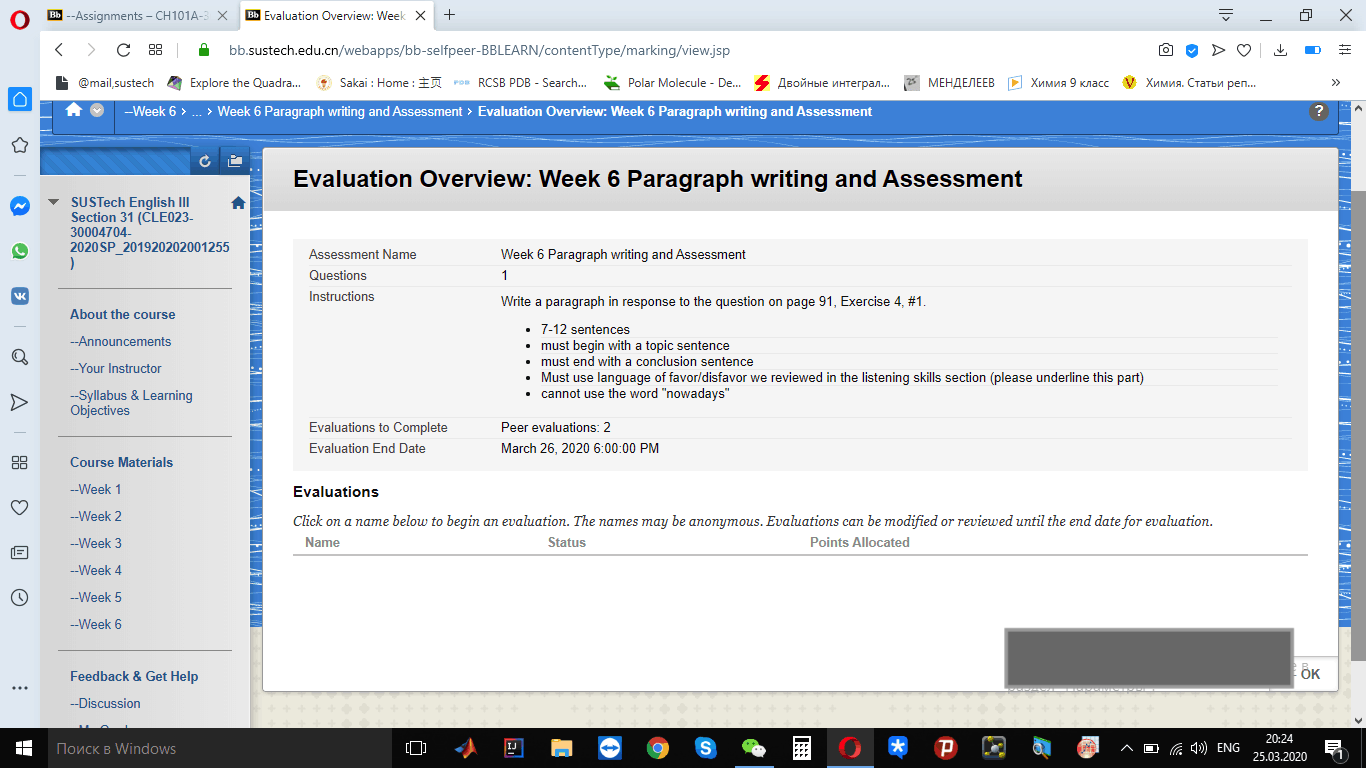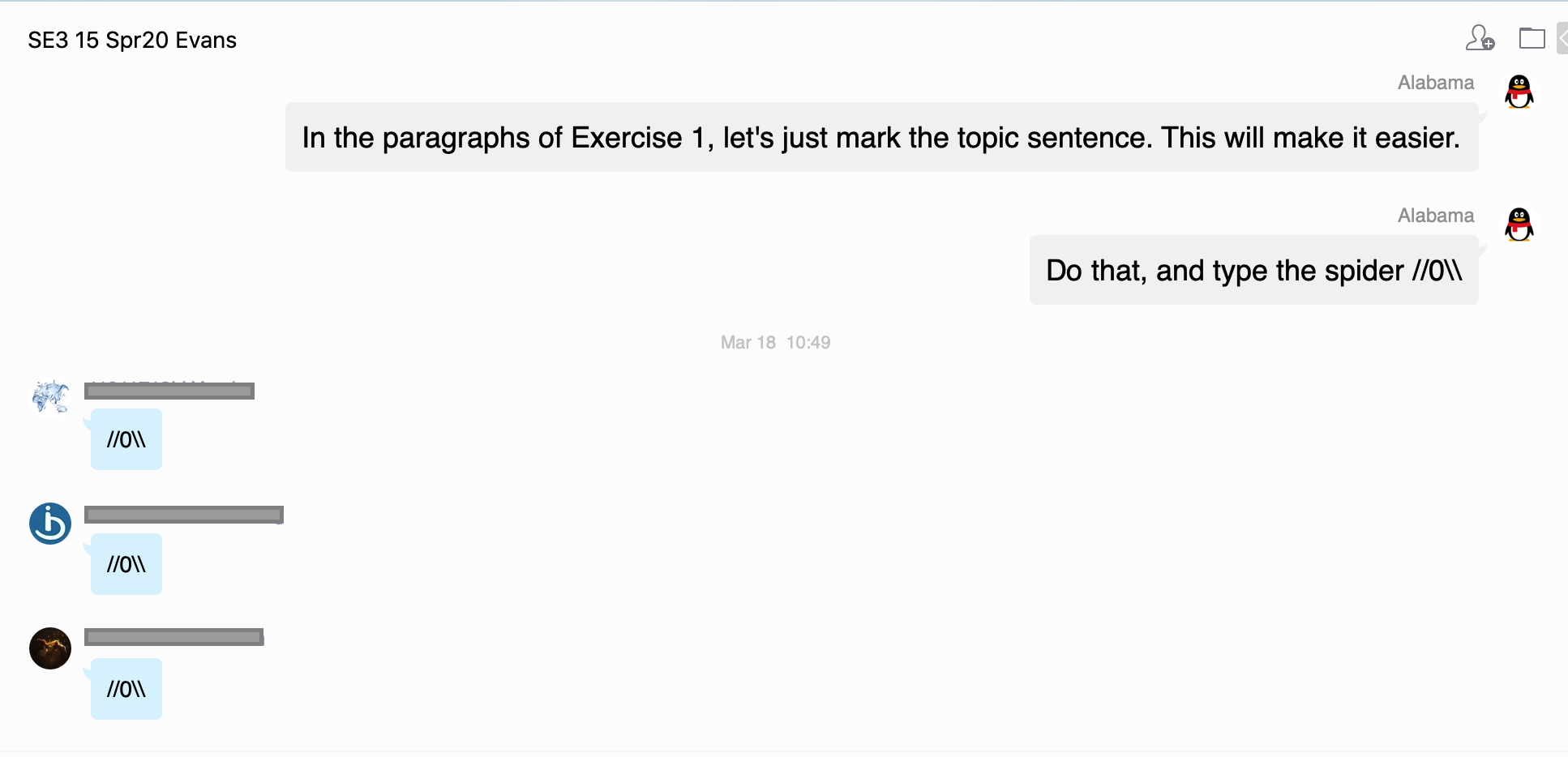The online teaching situation landed on all of us suddenly. It required lots of flexibility, patience, and the willingness to take risks. After looking at the situation, and the materials, and the resources, I quickly realized that the most important thing for me to change was my own mindset. Changing the way I thought about classes, to suit the situation was an enormous challenge because it broke teaching habits developed over many years.
As I often do when faced with any new project, consulting with trusted colleagues was an early step. I shared my thoughts and concerns. We quickly concluded that perhaps the best and most important thing we could offer in our online classes was interaction. They can do independent study outside of class time, but interaction in English would be rare for them. At the Center for Language Education (CLE), communication is a core value, so interaction is a necessity. With this in mind, I designed lots of opportunities for interaction. It has led to excellent levels of sustained engagement during our time online.

Just using Blackboard was not nearly enough. I needed more. In my plans, I set up QQ groups for each section. In the first hour, the entire class is on QQ, and the second hour is on Zoom. This means that the first hour is text-based, and we can communicate through reading and writing. In the second hour, we switch to a Zoom meeting, and the communication changes to speaking and listening.
Recently, I got some feedback that my class has a good pace. A Zoom meeting is a fairly good example. My general plan was to ask for a student response about every 2 to 3 minutes. I realized that I could get that down to about every 30 to 60 seconds. If I am screen-sharing some slides, I avoid reading the slides myself and call upon students to read them. After 60 seconds or so, I will stop the screen share and go back to the meeting view and speak to students “in person.” Cutting back and forth rapidly maintains a dynamic and regularly changing image in front of them. This is important in the visual medium to maintain participant attention. Regularly changing activities, differing modes of communication, and even alternating visual stimuli encourages their attention. Students must also use physical responses and gestures. If you add in electronic features available on the actual applications, there are many ways to keep a lively pace and steady engagement online.
As you might expect, it was not all ice cream and sunshine. Students had problems with the online aspect (computers, phones, apps, browsers, networks, wifi signal, and battery power among the issues students would face). The real-time element confused some students who were expecting more of an independent course where they consulted a list of tasks and then did them alone. They struggled with early assignments and online deadlines. They did not know how to create a video of themselves, or video record a conversation with others.

On my end, online teaching was hectic. I often had 12 windows open on a computer and felt like an octopus as I bounced from one to another while striving to keep a good pace and rhythm with the students. Simultaneously juggling three private conversations with individual students and carrying on the main class, uninterrupted, was daunting. Because I was working from home, I never left the office. I recall one day when I finished my two morning classes, answered some student questions, replied to some urgent student emails, and managed some pressing problems on Blackboard. I got up to eat lunch and realized it was 3:30 pm.
From the start, my professional curiosity drove my own learning. I learned that I was not alone. During week 5, I collaborated with a small group of colleagues to do online observations of each other’s classes. We wanted to explore what others were doing and how they were doing it. This small and enthusiastic community allowed us to learn and share without external pressure. Teaching online is new for all of us, and we simply do not see each other while working from home. Even the discussions about setting up the observations sparked a lot of conversation.
Recently, my colleagues in the USA have begun online teaching. They have asked me about my process and my approach. As I answered their questions, I realized how much I had crammed into my classes over time. I reflected on the conversations and the observations that I shared with my colleagues here. It has been quite an experience.
Still, I look forward to seeing my students in my classroom on campus. I hope that happens soon. My students tell me the same.
[Tips for teaching online]

Feedback from my students has been very positive. Immediately, I began to get messages from students saying they liked the class and its atmosphere. That last one shocked me. I had not even considered that an online class would have an atmosphere! Even with texting, I tried to offer something to attract their attention. I did not write, “Type ‘finished’ when you complete the task.” Instead, I would tell them, “Type the cat =^..^= when finished.” Because most of my students grew up with emojis, the ASCII art was another small detail to appeal to their interest and smile at them ( ^ o ^)/.